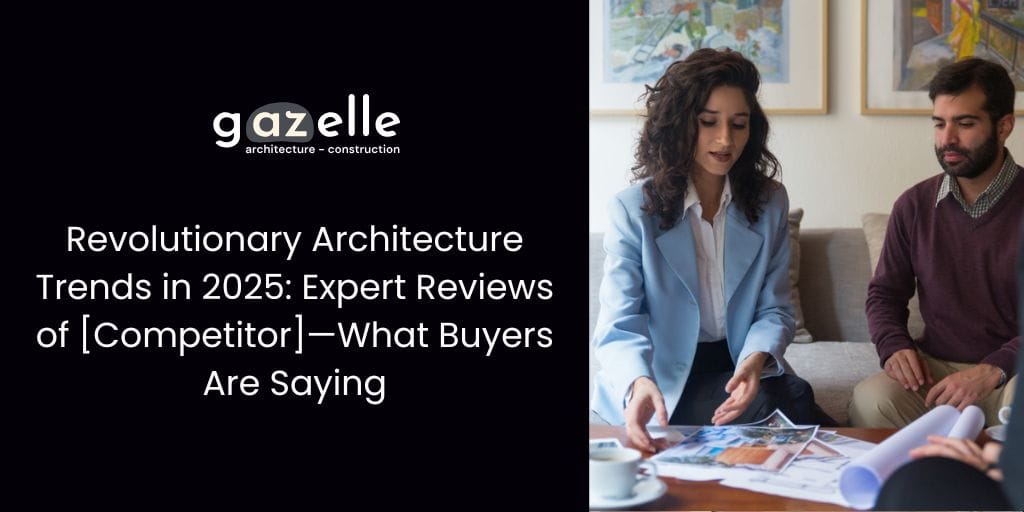Keep up with 2025’s newest architecture trends to stay ahead of the curve. View professional evaluations of [Competitor] and learn what actual customers have to say about cutting-edge technologies, sustainable features, and creative designs that are influencing architecture’s future.
Revolutionary Architecture Trends in 2025
As 2025 approaches, the architectural scene is changing at a never-before-seen rate. The trends shaping this transformation are revolutionary, with a focus on sustainability, technological integration, and innovative designs that blend functionality with beauty. Architecture trends in 2025 are all about rethinking how spaces are built, used, and experienced. From energy-efficient buildings to futuristic smart homes, the future of architecture is here, and it’s more exciting than ever.
One company that is making waves in the world of architectural design is [Competitor]. By embracing the latest trends, they are not just keeping up with the times—they are setting the stage for the future of urban and residential spaces. This post will explore some of the most prominent architecture trends for 2025, coupled with expert reviews and real buyer opinions of [the competitor’s] groundbreaking projects.
Key Architecture Trends to Watch in 2025
- Sustainable and Green Buildings: Sustainability is no longer a trend—it’s a necessity. With the growing concerns over climate change, eco-conscious design and construction are at the forefront of architectural practice. In 2025, architects are prioritizing energy-efficient solutions that reduce carbon footprints and make buildings more self-sufficient. Renewable energy systems such as solar panels and geothermal heating are becoming standard features. Green roofs, rainwater harvesting, and the use of recycled materials are also prominent in cutting-edge projects. [Competitor] has been a trailblazer in this field, using sustainable materials and energy-saving features in their buildings, significantly minimizing environmental impact without sacrificing luxury or design.
- Smart Homes and IoT Integration: The future of architecture is not just about the buildings themselves—it’s about how we interact with them. Smart homes powered by the Internet of Things (IoT) are revolutionizing the way people live. Automated lighting, climate control, smart security systems, and voice-activated assistants are now standard in many new homes. These technologies make life more convenient, comfortable, and energy-efficient. [Competitor] has integrated these advanced systems into their developments, ensuring that their buildings not only meet current lifestyle needs but also future-proof homeowners’ living experiences.
- Biophilic Design: In 2025, architecture is no longer just about constructing walls and roofs; it’s about creating environments that enhance well-being. Biophilic design—the practice of integrating nature into built environments—is gaining significant traction. This trend focuses on using natural materials, maximizing natural light, and incorporating green spaces both indoors and outdoors. Plants, water features, and wood are increasingly being used in architecture to bring the outdoors inside. [Competitor]’s latest projects are prime examples of biophilic design, with beautifully landscaped gardens, green walls, and open-air courtyards that promote relaxation and connection to nature.
- Modular and Prefabricated Construction: In an era of fast-paced development, efficiency is key. Modular and prefabricated construction methods are gaining popularity for their ability to reduce build time and costs. These methods involve the mass production of components in factories, which are then assembled on-site. This approach reduces waste, minimizes disruption, and improves construction timelines. [Competitor] is leveraging modular construction techniques to create high-quality, customizable homes that meet the demands of modern buyers while maintaining speed and cost efficiency.
- Mixed-Use Developments and Urban Smart Spaces: Another emerging architectural trend for 2025 is the incorporation of smart urban planning. With the growing need for multi-functional spaces, developers are focusing on creating mixed-use environments that blend residential, commercial, and recreational areas. These developments are designed to reduce commutes, improve walkability, and foster a sense of community. [Competitor] has implemented this concept in several of their projects, with developments that offer everything from office spaces and retail shops to parks and communal areas, all in one place.
What Buyers Are Saying About [Competitor]’s Architecture Trends
The people who experience a trend in architecture are the true judges of its success. Real buyer reviews provide valuable insight into how well these trends are resonating with the market. [Competitor] has garnered attention for its ability to seamlessly integrate cutting-edge architecture trends with everyday functionality.
Many buyers have highlighted the sustainable features of [the competitor’s] developments as a key selling point. The use of solar panels, energy-efficient appliances, and green building materials not only lowers energy costs but also provides homeowners with a sense of contributing to environmental preservation. Buyers have expressed satisfaction with how these features blend with sleek modern designs, creating homes that are both eco-friendly and aesthetically pleasing.
The integration of technology for smart homes has also been a standout feature for many buyers. From automated lighting to advanced security systems, buyers have praised the convenience and innovation that these technologies bring to everyday life. Some have noted that these features have made their homes more secure, while others appreciate the energy savings these systems provide.
Regarding biophilic design, buyers have praised the natural elements and green spaces in the competitor’s developments for their calming effects. Many have commented on how the incorporation of nature improves the quality of life, making their homes feel more connected to the environment.
Final Thoughts
The architecture trends of 2025 are all about blending innovation with sustainability, and [Competitor] is at the forefront of this movement. With cutting-edge designs that embrace eco-friendly solutions, smart technologies, and biophilic elements, they are paving the way for a greener, more connected future. Whether you’re looking to buy a home or simply interested in the latest architectural developments, [Competitor]’s work is a perfect example of how architecture is evolving to meet the needs of today and tomorrow.
For more insights into sustainable construction and architecture, visit NGL Construction, a leader in innovative construction solutions in Nagercoil and beyond.
